The Heroes of St Valery
51st Highland Division,
British Expeditionary Force,
attached to IXth French Corps, Battle for France 1940.
Saar (Maginot Line) April 1940 -
St Valéry-
The 51st Highland Division and the Battle of France, 1940.
One of my favourite films, "The Battle of Britain" begins with the routed British Expeditionary Force (BEF) fleeing France in 1940. Scenes of devastation, despair and defeat on the beaches of Dunkirk,are accompanied by Winston Churchill's heavy voice, declaring "the Battle of France has ended; the Battle of Britain has begun"..................
And so popular history would tell you; the BEF escaped from Dunkirk at the end of May 1940, defeated and demoralised, but mercifully intact. France capitulated and Britain stood alone.
But, this is not altogether true. Indeed, in Winston Churchill's most famous speech, given to the House of Commons on 4th June as he reported the Dunkirk evacuation, there is a clear acknowledgement that the BEF's fight in France had not ended at Dunkirk and that a significant part of the British and Commonwealth Armies continued the fight in France, alongside their European allies:
"We shall go on to the end, we shall fight in France, we shall fight on the seas and oceans, we shall fight with growing confidence and growing strength in the air, we shall defend our Island, whatever the cost may be, we shall fight on the beaches, we shall fight on the landing grounds, we shall fight in the fields and in the streets, we shall fight in the hills; we shall never surrender,......"
Blitzkreig Dunkirk was not the only naval evacuation from France in 1940, although it was certainly the largest. The German's surprise advance through the Ardennes had split the Allied forces in two, leaving most of Lord Gort's BEF trapped in a pincer movement at Dunkirk, whilst Von Rundstedt's Wehrmacht Army Group B continued its spearhead into France through the middle leaving the remainder of the BEF, in essence the elite 51st Highland Division, isolated to the south, with the main Allied forces to the north and Belgium.
Gort, as commander of the BEF, had explicit authority to override French orders,
and decided that strategic withdrawal at Dunkirk (with the full intention of re-
For the southern part of the BEF, this escape to the channel was not a part of the
plan. Major General Victor Fortune's British 51st Highland Division was fully embedded
within the French IXth Corps. Unlike Gort, he had not been given the authority to
override his French commanders, nor at this stage would he have felt the need to
do so. Thus, he continued the fight, redeploying the 51st in support of the French
Army, back to the west, then up to the north & east to re-
Back at Dunkirk, Gort's force was lifted from the beaches, relatively intact but
sadly without many of their comrades and most of their equipment or weapons. Unable
to conduct the planned re-
The Battle of France continues….
For those left behind, Churchill's "Battle of France" continued at a furious pace for several more weeks with reinforcements continuing to arrive in France (the 52nd Lowland Division and 1st Canadian Division landed at Cherbourg on 12 June but did not see action). Indeed, as the main force of the BEF embarked in their "Little Ships" at Dunkirk in late May 1940, the 51st Highland Division was just preparing for the bitter battle of Abbeville, where the German advance was halted for a brief time.
Despite these efforts, by late May it was clear that France had lost the will and ability to continue and more widespread evacuations of the BEF commenced (Operations Cycle and Ariel), not least in Brittany, but also in the Mediterranean. In total, over 200,000 troops were evacuated from France in the month after Dunkirk, in actions that included the terrible loss of the RMS Lancastria to a dive bomber off St Nazaire, the largest loss of British and Commonwealth life in a single engagement during the entire war and the largest ever British Maritime loss of life at sea in a single incident.
From the British perspective, the real end of serious Allied resistance in France
came on the 12th June 1940, at the French port of St Valery-
The Somme to St Valery The 51st was not a defeated army as the rest of the BEF had become. Over five gruelling weeks from the 10th of May 1940, as an integral part of the French IX Corps, it had fought a determined and continuous rearguard action from the Maginot Line, back via the Somme to the key French town of Abbeville and finally to the Channel coast. During numerous counter offensives, together with General De Gaulle's Chars d'Assault, the Highlanders had proved to be the equal of Rommel's Panzers, but without support and with the Germans advancing across a wide front, these efforts had been in vain. Nevertheless, as a Division, considering the circumstances it was in remarkably good spirit, an effective fighting force that remained one of the BEF's most modern and best equipped.
The intended plan was for the Royal Navy to evacuate the Division and re-
Although the Highlanders were ready, willing and able to fight to victory or to death, their charismatic leader, General Victor Fortune, understood that with French Army collapsing around it (by then, the French had received formal orders to surrender at 0800 on the 12th June) and ammunition nearly exhausted, such sacrifice would be pointless.
In an act of great personal courage, Fortune sought and obtained the approval of London to order his men to surrender.
Major General Fortune with Rommel at St Valery (IWM Photo).
One of the most senior British Officers to be captured during the war, he was knighted by King George in 1945, for his continued resistance to the Germans and services to his fellow POWs.
"Ground Weapons" At first the men refused to believe the order to lay down their weapons, suspecting a German trick. Then as it became clear that it was genuine, they were devastated and some broke down in tears. The Division was not ready to surrender. A few tried to fight on, whilst those at the western perimeter of the town's defences managed to escape. Small numbers made their way on foot to Le Havre, other individuals marched many hundreds of miles through France and Spain to Gibraltar, sometimes aided by their former French allies, sometimes betrayed, with many being interned by the Spanish authorities on the way.
For most though, escape was not possible; over 10,000 British men were captured on the 12 June, followed by a forced march from St Valery, many hundreds of miles through Belgium and Holland into eastern Germany/Poland and 5 hard years of captivity. During the march, British troops were routinely denied food and singled out for particularly harsh treatment by the Germans, with many being shot or beaten to death along the way. Brave attempts by French, Belgian and Dutch civilians to provide food and water to the marching column (now over 30,000 strong) as it passed through their villages and towns were met with extreme punishments.
Life in the German PoW camps was difficult; prisoners were used as slave labour in the salt mines of Thuringia alongside inmates of the Nazi concentration camps and treated in much the same way. Liberation by US Forces finally came in winter or 1944/45, but not before another forced march at the hands of their guards, this time away from the advancing Red Army and back toward Holland. Sadly, after years of hardship and malnutrition, the bitter cold of this final march proved fatal for many of the men.
The capture of the 51st Division remains a difficult and controversial memory in Scotland; some still maintain that Churchill deliberately sacrificed the Division to shame France into continuing the war. Others blame the French themselves, with reports that French soldiers had deliberately stood in front of the Highlander's guns to stop further resistance and that the French officers had fled the battle at the first opportunity. To this day, few in Scotland share the carefully orchestrated propaganda celebration of the Dunkirk evacuation as a "Victory".
Both views have an element of truth, although it is a matter of record that Churchill was apoplectic on hearing that the French had abandoned the Division; it became one of many issues souring his subsequent relationship with De Gaulle. But, equally many Highlanders speak well of the French soldiers with whom they fought, if not their commanders. However, if the aim was to keep France (or at least some of the French) in the war, then it succeeded and for that we should all be grateful. General De Gaulle is recorded as saying that the bond forged between the men of his French Armoured Division and the Highlanders at Abbeville was one of the key reasons for his decision to continue the war and lead the Free French forces, fighting on the side of the Allies.
Of course, St Valery was not the end of the 51st; back in the UK it was quickly reformed and went on to play a key role at El Alamein, and later in Normandy. In 1944, Field Marshal Montgomery insisted that the 51st be allowed to liberate the town of St Valery, halting the advance of Canadian troops until the 51st could be positioned to enter the town first.
Today, the proud legacy of the 51st Highland Division lives on in The Royal Regiment of Scotland.
The 1st Lothians & Border Yeomanry
51st Highland Division, France 1940.
In honour of my Grandfather and his many colleagues in the 1st Lothians and Borders Yeomanry, who fought from the Saar to St Valery, then endured many years of captivity.
"The Lothians" formed the 51st's Divisional Armoured Reconnaissance Regiment. Equipped with Vickers Mk VIb light tanks and Scout Carriers, they were a Territorial Regiment, recruiting volunteers from the Lowlands of Scotland around Edinburgh, with Regimental HQ in Dunbar.
On their arrival in France they replaced their sister Territorial Regiment, the Fife & Forfar Yeomanry, in the Saar area at the northern end of the Maginot Line, acting as a mechanised and armoured fast response force to counter any German breakthrough.
Throughout the retreat to St Valery, the Lothians remained at the core of the 51st Division, using their tanks and carriers to cover the retreat of the Division and its French allies. In continuous contact for more than 6 weeks, in almost all cases, they were the last Allied units to leave each area.
Like the other units of the 51st present at St Valery, the Lothians & Borders Yeomanry
were awarded St Valery-
On 30th April 1940, the 1st Lothians and Border Yeomanry become the first British Cavalry Regiment and first British Tanks to see action in WW2.
All too soon, on the 12th June 1940, they had also become the last British Cavalry Regiment to see action during the Battle for France.
Out of the entire 1st Lothians and Border Yeomanry, only 3 Officers and 17 Other Ranks managed to escape from St Valery; the remainder were taken into captivity in Eastern Germany.
1st Lothians and Border Horse Yeomanry After St Valery, the 1st Regiment was quickly reformed as the 1st Lothians and Border Horse Yeomanry and became part of the 30th Armoured Brigade, 79th Armoured Division, returning to France on D Day, June 6, 1944. The regiment and its specialised Sherman Flail Tanks were amongst the first Allied troops to hit the beaches of Normandy. They remained with the 79th Armoured Division in North West Europe until the end of the war.
The 2nd Lothians & Border (Horse) The 2nd Lothians & Border Regiment had been established in the build up to WW2. As part of the 6th Armoured Brigade's 26th Armoured Division, their Crusader and Valentine tanks, together with those of their sister unit the 17/21 Lancers, fought in the successful battle of Bou Arada in Tunisia in January 1943, where the Allies captured their first Tiger Tank as well as halting the German breakthrough at the infamous Kasserine Pass in February 1943.
In their first major engagements, the 2nd Lothians had firmly proved their mettle and avenged the loss of the 1st Lothians during the Battle for France.
Some useful References:
David, S. Churchill's Sacrifice of the Highland Division France 1940, Brasseys, London 1994. (A very comprehensive Historian's factual account)
Innes, W. St Valery The Impossible Odds, Birlinn, Edinburgh, 2004. (a personal account by the men of the 51st themselves)
Longden, S. Dunkirk The Men They Left Behind, Constable, London 2009. A wider based research into those BEF units that did not leave France at Dunkirk.
1st Lothians & Borders Yeomanry Website A recent and very comprehensive website dedicated to the L&BY in WW2, with many contemporary pictures.
www.Belgiumwww2.info Tales of those who managed to escape in Belguim and were assisted by the famous Comete Line.
Lothian's War Diary -
20 Dec 1939 -
8 January 1940 -
16-
1-
March 1940 -
1st Lothians & Border Yeomanry continue training in the Arras area. Church Parades,
Concerts, Football Matches and a cross-
11 April -
13 April -
18 April -
29 April -
30 April -
1-
11 May -
15 May -
20-
28 May -
31 May -
4 June -
5 June -
9 June -
10 June -
11 June -
12 June -
Out of the entire 1st Lothians and Border Yeomanry, only 3 Officers and 17 Other Ranks manage to escape; the remainder are taken into captivity.

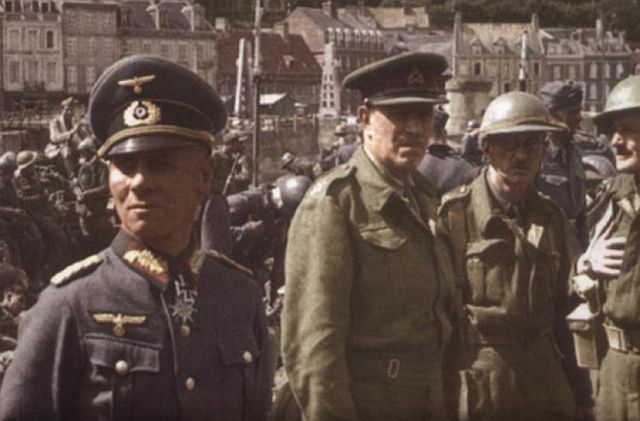
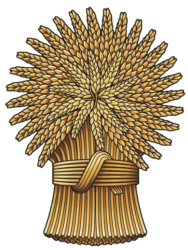

A Vickers Mk VI Light Reconnaissance tank of the type used by the 1st Lothians and
Border Yeomanry. Armed with a heavy .50 inch Vickers machine gun and a coaxial light
BESA 15nmm Machine gun, its 88 Hp 6-

Right: A Vickers Mk VI Light Reconnaissance tank of the type used by the 51st Division’s
Armoured Reconnaissance Regiment, the 1st Lothians and Border Yeomanry. Armed with
a heavy .50 inch Vickers machine gun and a coaxial light BESA 15mm Machine gun, its
88 Hp 6-
Below: The 51st Division was well equipped and largely mechanised, making extensive use of tracked Vickers Carrier variants, such as the Scout Carrier shown below.
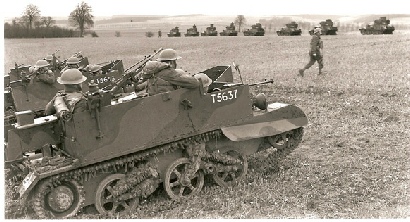
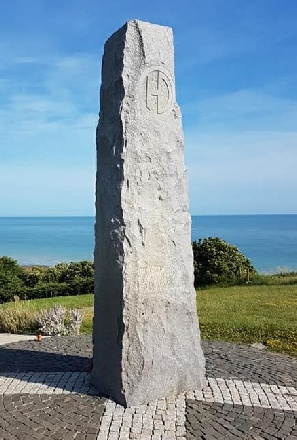
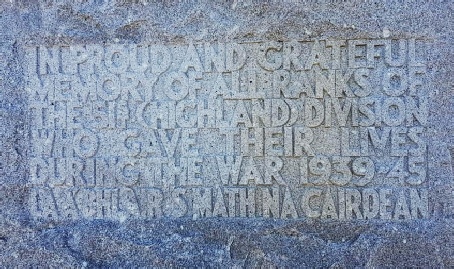
The 51st Highland Division Memorial above the harbour at St Valery, inscribed in memory of those who fought and lost their lives.
A scene without parallel in the history of armoured warfare: Re-
Twelve 88mm guns, 6x50mm and 16x20mm were captured. During the battle the Lothians & Border Horse lost 2 officers and 6 men, as well as 12 Sherman tanks.

The L&BH continued to play a key role in the Mediterranean campaign, fighting in Sicily then leading the crossing into mainland Italy and at the bitter battle for Monte Cassino. The Allied campaign in Italy was slow and tortuous, but by 6th June 1944 the 8th Army was advancing up the River Tiber toward the German strongpoints of the Gothic Line, with the tanks of the 2nd Lothians & Borders Horse Yeomanry leading the 6th Armd Div up Highway 3 in pursuit of Kesselring's forces.
Tanks of the Lothians and Border Yeomanry / Lothians and Border Horse Yeomanry: More details can be found at this link

www.gengriz.co.uk
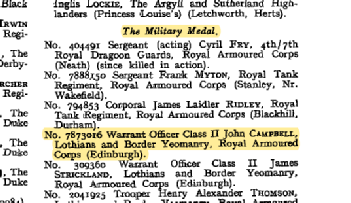
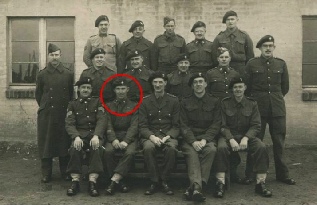
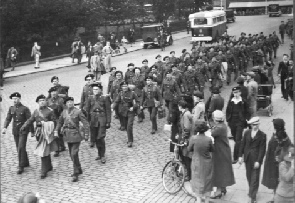
7873016 Sqn Sergeant Major John (Jock) Campbell, HQ Squadron
Prisoner of War: Stalag 1B Thorn and 383. Repatriated 1943
Awarded the Military Medal in 1945 for Gallantry in the run up to and at St Valery and as a PoW
Tanks of the Lothians and Border Yeomanry / Lothians and Border Horse Yeomanry: More details can be found at this link
www.gengriz.co.uk Updated June 2020